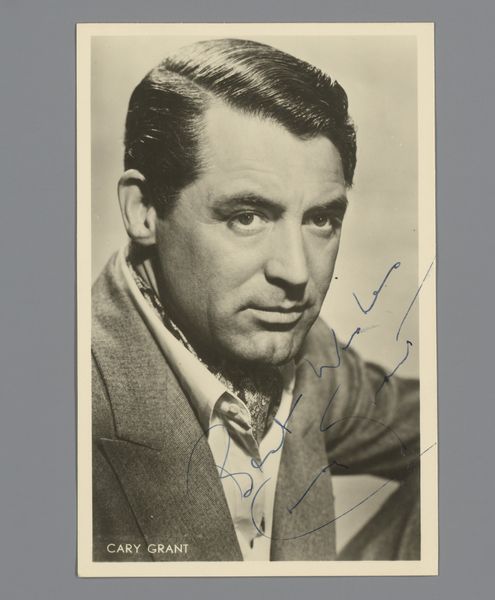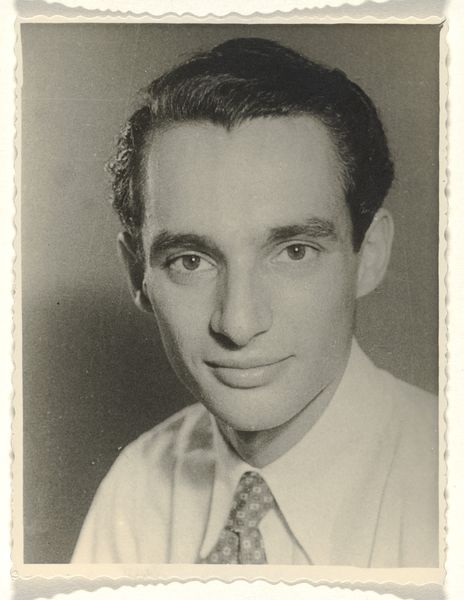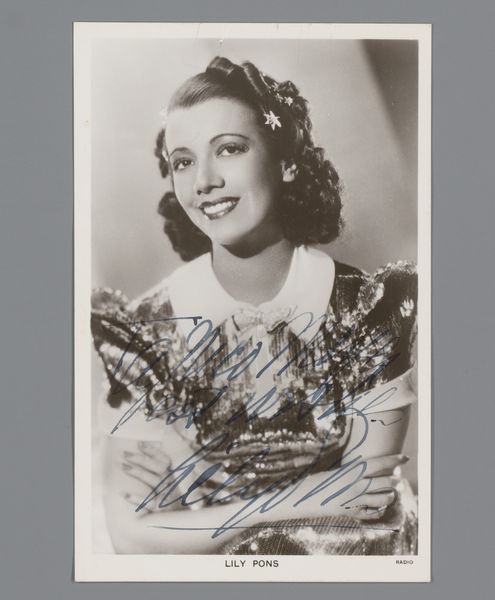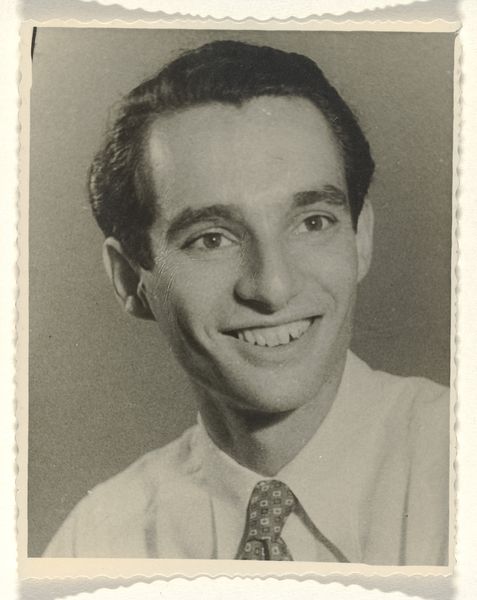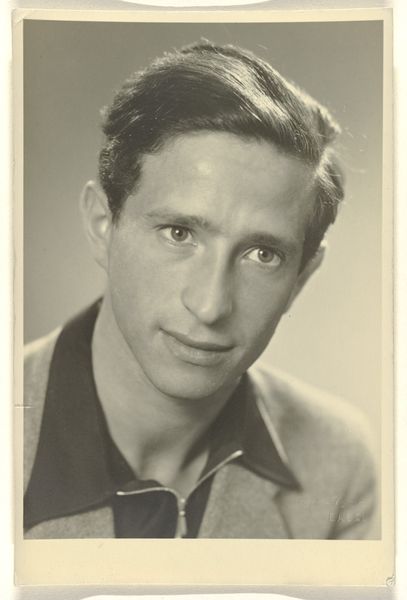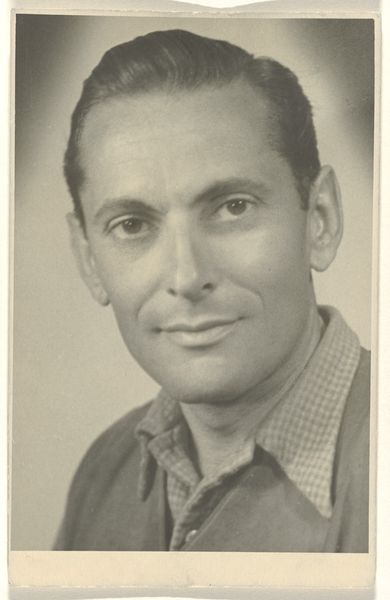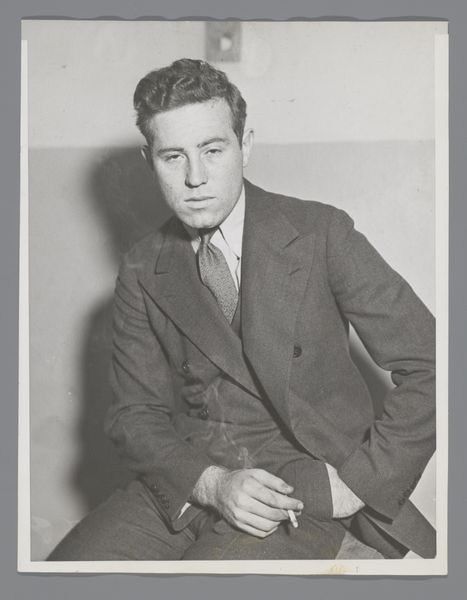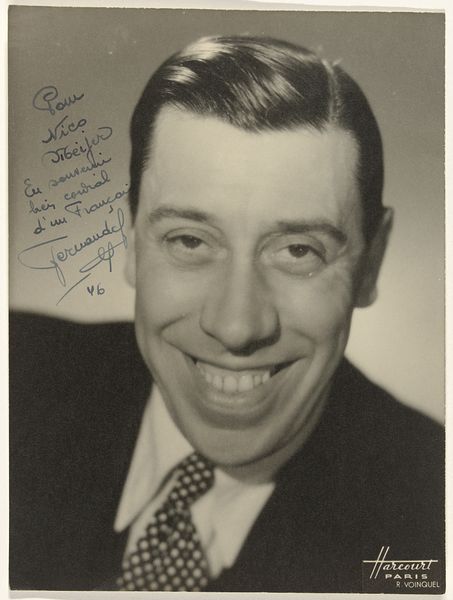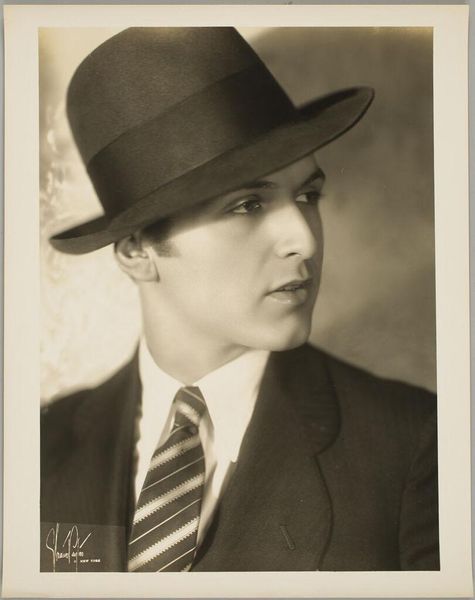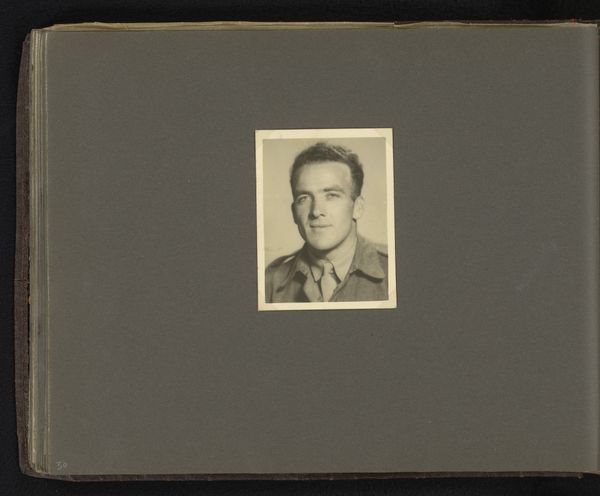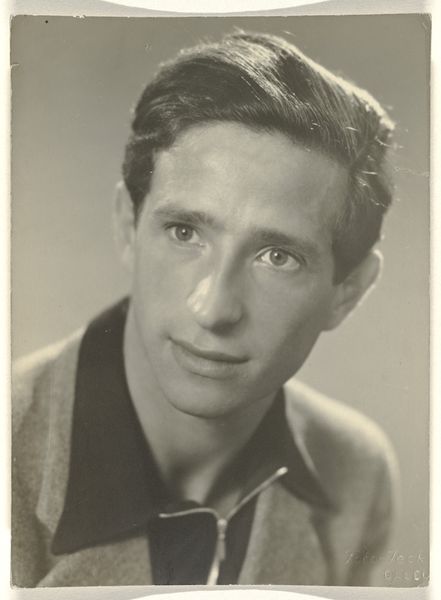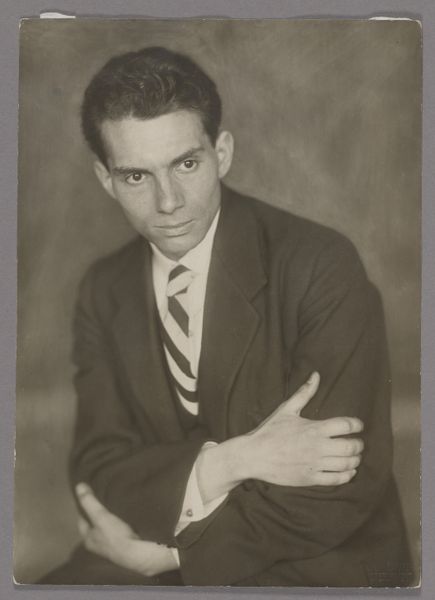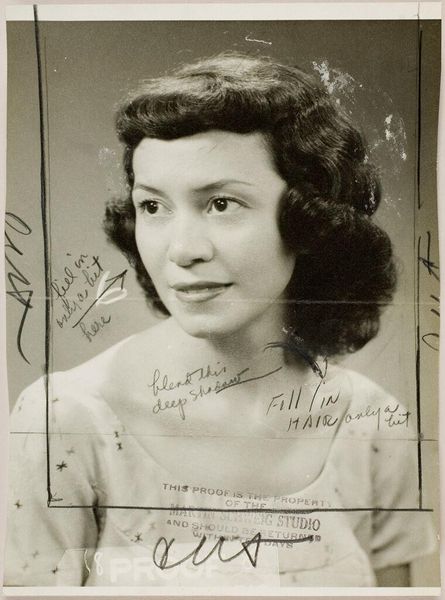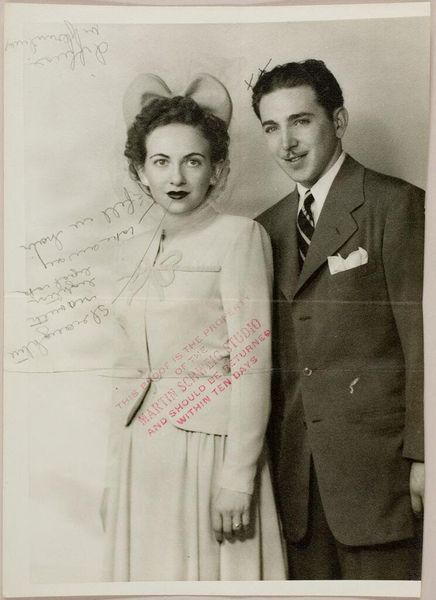
#
photo restoration
#
traditional media
#
personal journal design
#
print-effect
#
portrait reference
#
printed format
#
publication mockup
#
centered on page
#
paper medium
#
publication design
Dimensions: height 141 mm, width 89 mm
Copyright: Rijks Museum: Open Domain
Editor: This is a portrait of Johannes Heesters, the actor, from around 1936 to 1938, presumably a publicity still. It has this aged paper quality to it. What compositional elements stand out to you? Curator: Initially, the high contrast between the figure and the background dictates a certain visual hierarchy, focusing our attention on the subject’s face. Note the careful modulation of light across the cheekbones and brow—do you observe how these gradations serve to sculpt and define his features? Editor: Yes, there is a definite play with shadow that gives him presence. How does this treatment affect the overall impression? Curator: The sharp contrasts amplify the image’s dramatic quality, almost theatrical. However, the print quality itself seems slightly diffused, softened, as if to prevent it becoming overly stark or severe. Are you noticing how this controlled opposition impacts your reading? Editor: It makes it dynamic, although the tight framing and somewhat static pose keep the image from feeling too alive. Do you think the textural qualities of the photographic paper also contribute? Curator: Indubitably. The surface texture introduces a layer of complexity that a purely smooth finish would lack. The light interacts with the slight graininess, creating micro-shadows that enhance the three-dimensionality, don't you think? Editor: That's a good point, I hadn't considered how important the paper choice would be. The effect definitely helps convey the subject's character, even across time. Curator: Indeed, we’ve discovered how the seemingly simple choice of photographic paper elevates the portrait beyond mere likeness, imbuing it with both dramatic flair and tangible depth.
Comments
No comments
Be the first to comment and join the conversation on the ultimate creative platform.
